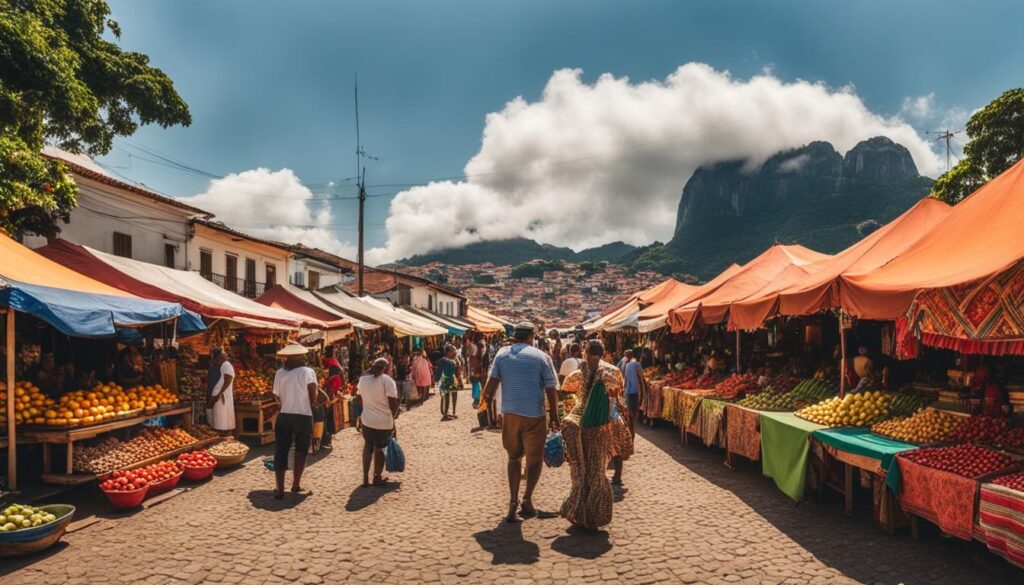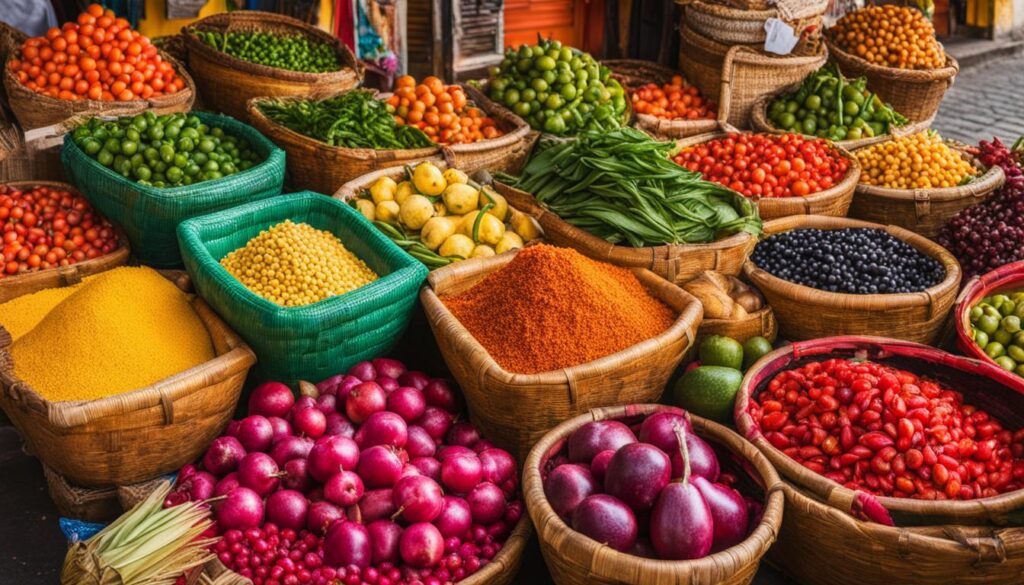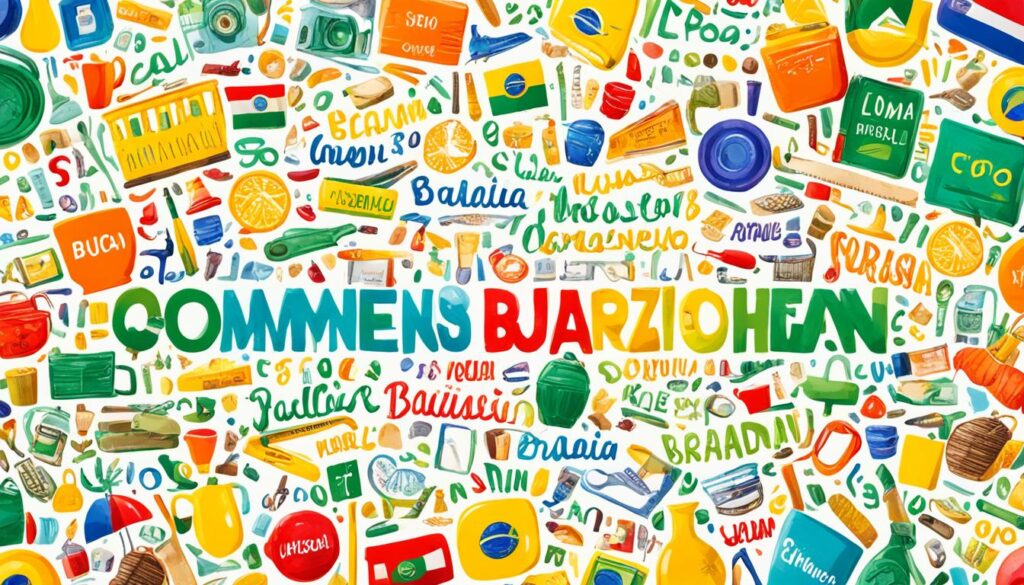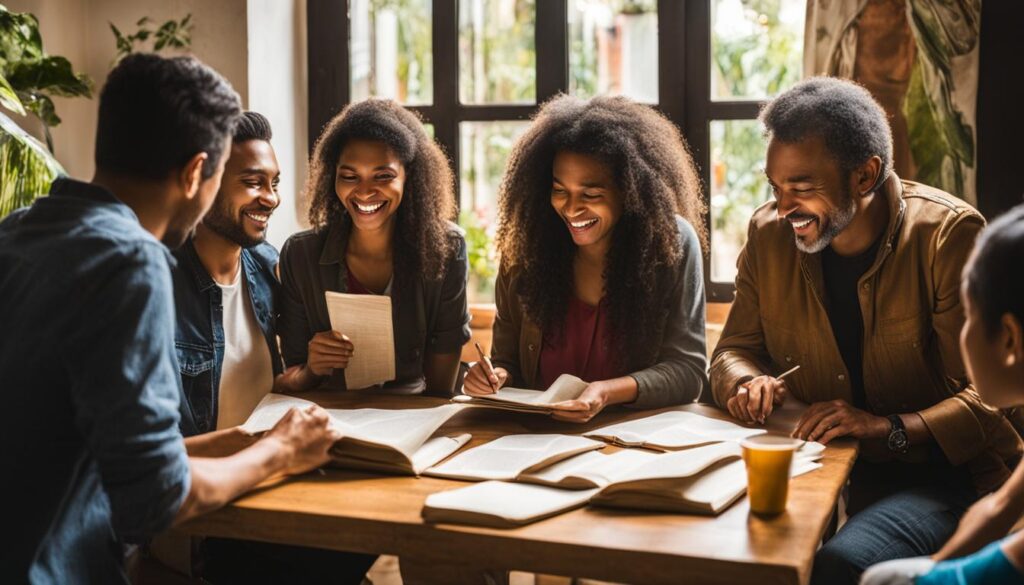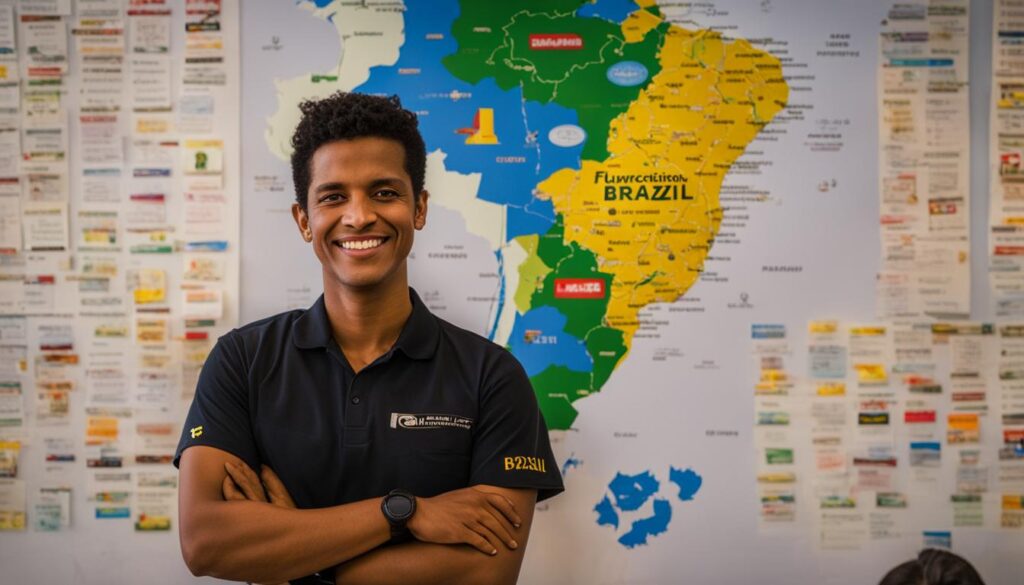Oh yes, affiliate links may be sprinkled throughout the awesome, free article you see below. I’ll receive a small commission when you purchase from my links (at no extra cost to you). For the full scoop of what this means, please read my affiliate disclosure.
In this comprehensive guide, I will provide you with all the necessary information to learn Brazilian Portuguese quickly and effectively. Whether you’re planning a trip to Brazil or simply want to expand your language skills, this guide will give you the tools and resources you need to become fluent in Brazilian Portuguese.
Learning a new language is a rewarding experience that opens doors to new cultures and opportunities. If you’re interested in learning Brazilian Portuguese, whether for travel, work, or personal growth, you’ve come to the right place. This guide is designed to provide you with a structured approach to learning Brazilian Portuguese that is efficient and effective.
Why should you learn Brazilian Portuguese?
Learning Brazilian Portuguese can greatly enhance your travel experience in Brazil. By speaking the local language, you can easily communicate with locals, navigate daily situations, and gain a deeper understanding of Brazilian culture. Whether you’re exploring the vibrant streets of Rio de Janeiro, relaxing on the stunning beaches of Salvador, or immersing yourself in the Amazon rainforest, speaking Brazilian Portuguese will enrich your interactions and allow you to connect with the people and the country on a whole new level.
Key Takeaways:
- Learning Brazilian Portuguese opens up opportunities for cultural immersion and deeper travel experiences in Brazil.
- Speaking the local language allows for better communication with locals and navigating everyday situations.
- Brazilian Portuguese is a gateway to the rich cultural heritage of Brazil, from music and literature to social customs and traditions.
- Consistency and immersion are key to developing fluency and confidence in Brazilian Portuguese.
- There are various resources and tools available to enhance your learning journey, from language learning apps to language exchange programs.
Now that you understand the benefits of learning Brazilian Portuguese, let’s dive into the first steps of your language learning journey. Join me in the Learn Portuguese section of my blog for a comprehensive guide on pronunciation, vocabulary, grammar, and more. It’s time to embark on an exciting adventure of language learning and cultural exploration!
Marina and Zephyr – Easy Stories in Brazilian Portuguese
A must-read compilation featuring sixteen chapters and captivating short stories designed for both children and adult learners of Brazilian Portuguese.
My name is Marina Luna. As an experienced Portuguese teacher, I am thrilled to present this collection of stories that combines my passion for teaching with the joy of storytelling. Therefore, the selection of words has been meticulously curated to introduce 144 new terms mapped to A2-B1 on the Common Framework of Reference (CEFR) for languages, complemented by translations in English, Spanish, and French.
What does this book give you?
– 16 chapters with funny stories
– Audio book so you can practice your listening
– Video story
– 144 new words with translation in English, Spanish and French
– Easy language to help you to progress confidently
– Lovely characters
– Beautiful illustrations accompanying each page, to set the scene and support your understanding
Consequently, you can immerse yourself in the pleasure of reading, as well as the expansion of your vocabulary and language proficiency, all without experiencing any sense of being overwhelmed. Marina and Zephyr: Easy Book In Portuguese ensures a seamless and enjoyable path to learning the language.
Why Learning Brazilian Portuguese Will Transform Your Travel Experience
Learning Brazilian Portuguese can greatly enhance your travel experience in Brazil. By speaking the local language, you can easily communicate with locals, navigate daily situations, and gain a deeper understanding of Brazilian culture.
When exploring a foreign country, language immersion is key to fully experiencing the local culture. Learning Brazilian Portuguese allows you to connect with the people on a deeper level, creating meaningful interactions and lasting memories. By speaking the language, you can engage in conversations with locals, make new friends, and gain insights into their way of life.
Additionally, learning Brazilian Portuguese provides you with the tools to navigate daily situations more effectively. Whether it’s ordering food at a restaurant, asking for directions, or shopping at local markets, being able to communicate in the local language allows you to confidently handle these everyday interactions.
Furthermore, learning Brazilian Portuguese will give you a unique perspective on Brazilian culture. Language is deeply intertwined with culture, and by understanding the language, you gain a deeper appreciation for the customs, traditions, and values of the Brazilian people.
By immersing yourself in the language and culture, you can develop a greater sensitivity and cultural understanding, leading to more fulfilling travel experiences. Whether you’re visiting famous landmarks, attending local events, or exploring off-the-beaten-path destinations, knowing Brazilian Portuguese will enrich your travel adventures.
First Steps in Brazilian Portuguese: Greetings and Basic Phrases
In this section, I will guide you through the first steps of learning Brazilian Portuguese, starting with mastering common greetings and essential phrases for everyday use. These basic phrases will lay a strong foundation for your language learning journey and help you navigate social interactions with confidence.
Master Common Greetings
When learning Brazilian Portuguese, it’s important to familiarize yourself with common greetings used in everyday conversations. Here are some essential greetings to get you started:
- Bom dia – Good morning
- Boa tarde – Good afternoon
- Boa noite – Good evening/night
- Olá – Hello
- Tudo bem? – How are you?
Using these greetings will help you make a positive impression and establish rapport with native Portuguese speakers.
Essential Phrases for Everyday Use
In addition to greetings, it’s essential to learn some basic phrases for everyday communication. These phrases will come in handy in various situations, such as introductions, expressing gratitude, and seeking assistance. Here are a few examples:
- Como você se chama? – What’s your name?
- Desculpe, eu não entendo. – Sorry, I don’t understand.
- Obrigado(a). – Thank you.
- Por favor. – Please.
- Onde fica o banheiro? – Where is the restroom?
These phrases will help you communicate effectively in day-to-day situations and engage in basic conversations with confidence.
Now that you have learned some key greetings and basic phrases, you can practice using them in real-life situations. To further enhance your language learning experience, I invite you to check out the Learn Portuguese section of my blog here for additional resources and interactive exercises.
Navigating Everyday Situations in Brazil with Key Language Skills
To navigate everyday situations in Brazil with ease, it is essential to possess key language skills in Brazilian Portuguese. In this section, I will discuss the practical language use required for various common scenarios, such as ordering food, asking for directions, and shopping. By acquiring these language skills, you will be able to confidently handle everyday situations during your time in Brazil.
When it comes to ordering food in Brazil, knowing the right phrases and vocabulary is crucial. Whether you’re dining at a restaurant or grabbing a quick bite at a local food stall, having the ability to communicate your preferences is essential. From ordering your favorite dishes to asking about dietary restrictions, language skills in Brazilian Portuguese will ensure you have a delightful dining experience.
Asking for directions is another common situation where practical language skills can be a lifesaver. Whether you’re exploring the vibrant streets of São Paulo or strolling along the breathtaking beaches of Rio de Janeiro, being able to ask for directions in Portuguese will help you navigate with confidence. From inquiring about landmarks to understanding public transportation, these language skills will empower you to explore Brazil’s wonders with ease.
When it comes to shopping, conversing with local vendors and understanding pricing can make a significant difference. By developing practical language skills in Brazilian Portuguese, you’ll be able to negotiate prices, ask about product details, and engage in friendly interactions at markets and stores. These language skills will enhance your shopping experience and allow you to connect with the local community.
To assist you further in developing your Brazilian Portuguese language skills, I invite you to explore the Learn Portuguese section of my blog, Braziluna. There, you’ll find valuable resources, including useful phrases, vocabulary lists, and interactive exercises tailored to everyday situations in Brazil.
Remember, by honing your Brazilian Portuguese language skills, you’ll be better equipped to handle everyday situations, immerse yourself in Brazilian culture, and create unforgettable experiences during your time in this vibrant country.
How To Speak Brazilian Portuguese With Correct Pronunciation
Speaking with correct pronunciation is crucial for effective communication in Brazilian Portuguese. Accurate pronunciation helps you be understood by native speakers and enhances your overall fluency. In this section, I will guide you on how to pronounce Brazilian Portuguese sounds accurately and provide tips and exercises to improve your pronunciation skills.
One of the first steps in achieving correct pronunciation is familiarizing yourself with the specific sounds of Brazilian Portuguese. This can be challenging, especially if you’re coming from a different language background. However, with patience and practice, you can develop a clear and natural-sounding accent.
To begin, let’s address some common pronunciation challenges in Brazilian Portuguese:
- Nasal sounds: Pay attention to nasal sounds like “ão” and “ãe.” Practice pronouncing them by using your nose to resonate the sound.
- Softening of consonant sounds: Brazilian Portuguese often softens consonant sounds, such as the “r” sound, which is pronounced as a soft “h.” Practice making the “r” sound by lightly touching the tip of your tongue to the roof of your mouth.
- Vowel sounds: Brazilian Portuguese has vowel sounds that may differ from those in your native language. Practice each vowel sound individually until you can pronounce them accurately.
To help you improve your pronunciation, here are some tips and exercises:
- Listen and imitate: Listen to native speakers and try to imitate their pronunciation. Pay attention to their intonation, rhythm, and emphasis on certain sounds.
- Record and compare: Record yourself speaking in Brazilian Portuguese and compare it to native speakers. Identify areas where your pronunciation can be improved and work on those specific sounds.
- Tongue twisters: Practice tongue twisters that incorporate challenging sounds in Brazilian Portuguese. This will help you develop muscle memory and improve your pronunciation skills.
Remember that consistency and regular practice are key to honing your pronunciation skills. Incorporate pronunciation exercises into your daily language learning routine and be patient with yourself as you progress.
For additional resources and exercises to enhance your Brazilian Portuguese pronunciation, I invite you to explore the Learn Portuguese section of my blog https://braziluna.com/learnportuguese/. Here, you will find a wide range of materials designed to help you speak Brazilian Portuguese with confidence and accuracy.
Building Your Brazilian Portuguese Vocabulary for Daily Interactions
In order to effectively communicate and engage in daily interactions in Brazilian Portuguese, it is essential to build a strong vocabulary. This section will focus on two important aspects of vocabulary: food and dining terms, and travel-related vocabulary.
Terms for Food and Dining
When dining out in Brazil, it is useful to be familiar with common food and dining terms. Here are some key vocabulary words and phrases:
| Portuguese | English |
|---|---|
| Restaurante | Restaurant |
| Cardápio | Menu |
| Prato do dia | Dish of the day |
| Aperitivo | Appetizer |
| Entrada | Starter |
| Prato principal | Main course |
| Sobremesa | Dessert |
| Conta | Bill |
By familiarizing yourself with these terms, you will be able to confidently navigate menus and communicate your preferences in restaurants and cafes while in Brazil.
Travel-Related Vocabulary
When traveling in Brazil, it is important to have a basic understanding of travel-related vocabulary to help you navigate transportation, accommodations, and tourist attractions. Here are some useful words and phrases:
| Portuguese | English |
|---|---|
| Aeroporto | Airport |
| Estação de trem | Train station |
| Ponto de ônibus | Bus stop |
| Hotel | Hotel |
| Check-in | Check-in |
| Praia | Beach |
| Atrativo turístico | Tourist attraction |
| Roteiro | Itinerary |
With these travel-related terms, you will feel more confident and be able to navigate your way through Brazil’s transportation systems and tourist destinations.
Understanding Brazilian Portuguese Grammar Basics
When learning Brazilian Portuguese, understanding the fundamentals of grammar is essential for constructing meaningful conversations. In this section, I will guide you through two key aspects of Brazilian Portuguese grammar: the role of gender and number in nouns and articles, and verb conjugations.
The Role of Gender and Number in Nouns and Articles
In Brazilian Portuguese, nouns and articles are influenced by gender and number. Nouns are classified as either masculine or feminine, and articles must agree with the gender of the noun they modify. For example:
o livro (the book) – masculine singular
a cadeira (the chair) – feminine singular
os livros (the books) – masculine plural
as cadeiras (the chairs) – feminine plural
Knowing the gender and number of nouns will help you form grammatically correct sentences and descriptions in Brazilian Portuguese.
Verb Conjugations: The Foundation for Meaningful Conversation
One of the most important aspects of Brazilian Portuguese grammar is verb conjugation. Verbs change their form according to the subject, tense, and mood of the sentence. Let’s take a look at an example:
| Person | Verb: To Speak (falar) |
|---|---|
| I | falo (speak) |
| You (informal) | falas (speak) |
| He/She/It | fala (speaks) |
| We | falamos (speak) |
| You (plural/formal) | falam (speak) |
| They | falam (speak) |
Verb conjugations allow you to express yourself accurately and have meaningful conversations in Brazilian Portuguese.
For further guidance on Brazilian Portuguese grammar, I invite you to visit the Learn Portuguese section on my blog, where you will find additional resources and exercises to consolidate your understanding of grammar concepts.
The Richness of Brazilian Culture Through Language
Language is deeply connected to culture, and learning Brazilian Portuguese can give you insights into the rich cultural heritage of Brazil. Brazilian culture is diverse and vibrant, with influences from indigenous peoples, European colonizers, and African slaves. By immersing yourself in the language, you can explore the multifaceted aspects of Brazilian culture, including:
- Music: Brazilian music is known worldwide for its infectious rhythms and diverse genres, such as samba, bossa nova, and forró. It’s through the lyrics of Brazilian songs that you can truly feel the passion, joy, and melancholy that permeate the country’s culture.
- Literature: Brazilian literature is a treasure trove of storytelling, reflecting the country’s history, social issues, and unique perspectives. From acclaimed authors like Machado de Assis to contemporary writers like Paulo Coelho, exploring Brazilian literature in its original language allows you to appreciate the nuances and beauty of the written word.
- Art: Brazil is home to a vibrant art scene, encompassing various forms such as painting, sculpture, street art, and photography. Learning Brazilian Portuguese enables you to engage with the art community, understand the context behind artworks, and appreciate the cultural expressions captured in each piece.
- Social Customs: Language is intricately intertwined with social customs and etiquette. By immersing yourself in Brazilian Portuguese, you can learn about the cultural norms, greetings, gestures, and expressions that shape interactions with locals. This knowledge fosters deeper connections and shows respect for Brazilian traditions.
Embracing Brazilian Portuguese is not only about learning a language; it’s about embarking on a journey of cultural immersion and understanding. By understanding the cultural context, you will be able to engage more meaningfully with the Brazilian people and their rich traditions.
Discover more about Brazilian culture and deepen your language skills by visiting the Learn Portuguese section of my blog. Explore interactive lessons, language exercises, and resources designed to enhance your learning experience. Immerse yourself in the beauty of Brazilian culture through language and bring a new level of authenticity to your language journey!
Immersion Yourself in Brazilian Portuguese: Tips and Strategies
Immersing yourself in the language is one of the most effective ways to accelerate your Brazilian Portuguese learning journey. It allows you to practice your language skills in real-life situations and gain a deeper understanding of the culture. In this section, I will provide you with tips and strategies to immerse yourself in Brazilian Portuguese, maximizing your language learning experience.
Language Learning Apps and Courses
Language learning apps and courses are valuable resources that can greatly enhance your immersion experience. These tools provide structured lessons, interactive exercises, and language practice opportunities. Here are some highly recommended language learning apps and courses for Brazilian Portuguese immersion:
- Duolingo: A popular language learning app that offers gamified lessons and personalized learning paths.
- Rosetta Stone: An immersive language learning program that uses dynamic immersion techniques to build language skills.
- Pimsleur: An audio-based language learning program that focuses on conversational skills and pronunciation.
These apps and courses provide a variety of learning methods, ensuring that you can find the one that suits your learning style and level of proficiency. Incorporate them into your daily language learning routine for consistent progress.
Engaging with Brazilian TV Shows and Films
Another fantastic way to immerse yourself in Brazilian Portuguese is through watching TV shows and films. It not only helps improve your listening and comprehension skills but also exposes you to native accents, colloquial expressions, and cultural references. Here are some popular Brazilian TV shows and films to get you started:
- Cidade de Deus (City of God): A critically acclaimed crime drama that explores life in the favelas of Rio de Janeiro.
- Tropa de Elite (Elite Squad): A gripping action film that delves into the corruption and violence within the Brazilian police force.
- 3% (3%): A dystopian thriller series set in a future where only 3% of the population can escape poverty and live in luxury.
By watching these TV shows and films, you will not only improve your language skills but also gain a deeper understanding of Brazilian culture, history, and society. Consider using subtitles in Portuguese to aid comprehension, and gradually challenge yourself to watch without subtitles as your language proficiency increases.
For further language learning resources and tips, don’t forget to check out the Learn Portuguese section of my blog. It contains a variety of useful materials to support your Brazilian Portuguese language journey.
Practical Language Practice: Speaking with Native Brazilian Portuguese Speakers
When it comes to improving your language skills, there’s no substitute for speaking with native speakers. Engaging in conversations with Brazilians will not only enhance your understanding of the language but also expose you to the nuances of Brazilian culture.
So how can you practice speaking with native Brazilian Portuguese speakers? Here are some practical methods:
- Language exchange programs: Joining a language exchange program allows you to connect with native speakers who are learning your native language. This mutual exchange creates a supportive environment for practicing Brazilian Portuguese together.
- Conversation partners: Find conversation partners through online platforms, language learning communities, or local language schools. Regular conversations with a native speaker can improve your pronunciation, vocabulary, and overall fluency.
- Language meetups: Attend language meetups in your area or join online language groups where native Brazilian Portuguese speakers gather to practice languages. These events provide opportunities for immersive language practice and cultural exchange.
- Online language communities: Participate in forums, discussion boards, or social media groups dedicated to Brazilian Portuguese learners. Engaging with native speakers virtually allows you to practice your language skills at your own pace.
Effective language practice involves actively engaging with native speakers, learning from their experiences, and getting real-time feedback. Remember to be patient, open-minded, and respectful during your language practice sessions.
To further develop your Brazilian Portuguese skills, I invite you to explore the Learn Portuguese section of my blog here. It is filled with resources, tips, and exercises to help you on your language learning journey.
Overcoming Challenges in Brazilian Portuguese Conversation Practice
Developing fluency in Brazilian Portuguese requires consistent conversation practice. However, this can present challenges along the way. In this section, I will address common difficulties faced during conversation practice and provide strategies to help you overcome them. Whether you struggle with anxiety, listening skills, or maintaining a smooth flow of conversation, I have you covered.
One of the common challenges faced during conversation practice is anxiety. It’s natural to feel nervous when speaking a new language, but don’t let it hold you back. Remember, mistakes are a part of the learning process, and native speakers are often supportive and understanding. Embrace the opportunity to practice, and gradually, your confidence will grow.
Another challenge is improving your listening skills. Understanding rapid Brazilian Portuguese conversations can be daunting, especially in the early stages of learning. To overcome this, immerse yourself in authentic Portuguese content such as movies, podcasts, and music. Listen actively, gradually training your ear to decipher different accents and speech patterns.
To maintain a smooth flow of conversation, it’s essential to expand your vocabulary. Building a robust vocabulary will enable you to express yourself more precisely and engage in deeper conversations. Work on learning new words and phrases every day, and practice incorporating them naturally into your conversations.
Lastly, remember that language practice is a journey. Be patient with yourself and celebrate your progress along the way. To further enhance your conversation skills, I invite you to explore the Learn Portuguese section of my blog. It offers a wealth of resources, including grammar guides, vocabulary lists, and interactive exercises to help you build fluency in Brazilian Portuguese.
Essential Brazilian Portuguese Situational Dialogues
Situational dialogues are a practical way to practice Brazilian Portuguese in real-life scenarios. In this section, I will provide essential dialogues for common situations, such as ordering at a restaurant and shopping in Brazil. These dialogues will help you navigate these situations with confidence and improve your conversational skills.
At the Restaurant: Ordering and Dining Etiquette
When dining out in Brazil, knowing how to order in Portuguese and understanding dining etiquette can make your experience more enjoyable. Below is a situational dialogue that showcases ordering at a restaurant:
Waiter: Boa noite! Vamos começar com um aperitivo?
You: Sim, por favor. Gostaria de uma porção de coxinha.
Waiter: Ótima escolha! E para o prato principal?
You: Eu vou querer o prato do dia, por favor.
Waiter: Como você gostaria do seu bife?
You: Ao ponto, por favor.
Waiter: Com certeza! Deseja algo para beber?
You: Uma água mineral sem gás, por favor.
Waiter: Com certeza! Seu pedido será entregue em breve.
Learning phrases such as “Eu gostaria” (I would like), “Por favor” (Please), and “Obrigado/a” (Thank you) can greatly enhance your dining experience in Brazil. Additionally, being aware of local dining customs such as leaving a tip (10-15% of the total bill) and using the knife and fork appropriately can help you navigate the cultural aspect of dining.
Shopping in Brazil: Bargaining and Buying Essentials
Shopping in Brazil can be a vibrant and exciting experience, especially if you know how to negotiate prices and communicate effectively. Here is a situational dialogue that illustrates shopping in Brazil:
Shopkeeper: Boa tarde! O que você está procurando hoje?
You: Estou procurando uma camiseta para o meu amigo.
Shopkeeper: Temos várias opções aqui. Essa camiseta custa R$50, mas posso fazer por R$40 para você.
You: Posso conseguir um desconto maior?
Shopkeeper: Tudo bem, posso fazer por R$35.
You: Fechado! Vou levar essa camiseta.
Shopkeeper: Ótimo! Posso embrulhar para presente?
You: Sim, por favor.
Shopkeeper: Aqui está seu troco e o recibo. Obrigado pela compra!
Learning phrases such as “Quanto custa?” (How much does it cost?), “Posso conseguir um desconto?” (Can I get a discount?), and “Obrigado/a pela compra” (Thank you for your purchase) can help you navigate the shopping experience in Brazil. Additionally, it’s important to be aware of local customs such as bargaining (common in markets and informal shops) and carrying cash, as some smaller establishments may not accept credit cards.
For more situational dialogues and language learning resources, be sure to check out the Learn Portuguese section of my blog. It’s filled with useful tips and tools to aid in your Brazilian Portuguese language journey!
Advancing From Basic to Intermediate Brazilian Portuguese Language Skills
Once you have mastered the basics of Brazilian Portuguese, it’s time to take your language skills to the next level. Advancing from a beginner to an intermediate level will allow you to communicate more confidently and express yourself with greater accuracy. In this section, I will provide you with strategies and resources to help you advance your Brazilian Portuguese language skills.
Marina and Zephyr – Easy Stories in Brazilian Portuguese
A must-read compilation featuring sixteen chapters and captivating short stories designed for both children and adult learners of Brazilian Portuguese.
My name is Marina Luna. As an experienced Portuguese teacher, I am thrilled to present this collection of stories that combines my passion for teaching with the joy of storytelling. Therefore, the selection of words has been meticulously curated to introduce 144 new terms mapped to A2-B1 on the Common Framework of Reference (CEFR) for languages, complemented by translations in English, Spanish, and French.
What does this book give you?
– 16 chapters with funny stories
– Audio book so you can practice your listening
– Video story
– 144 new words with translation in English, Spanish and French
– Easy language to help you to progress confidently
– Lovely characters
– Beautiful illustrations accompanying each page, to set the scene and support your understandingConsequently, you can immerse yourself in the pleasure of reading, as well as the expansion of your vocabulary and language proficiency, all without experiencing any sense of being overwhelmed. Marina and Zephyr: Easy Book In Portuguese ensures a seamless and enjoyable path to learning the language.
To become an intermediate Portuguese speaker, it’s important to expand your vocabulary, deepen your understanding of grammar concepts, and practice more complex conversational skills. Here are some key steps you can take:
- Expand your Vocabulary: Continue building your vocabulary by learning new words and phrases. Read books, articles, or blogs in Brazilian Portuguese, listen to podcasts, or watch videos to encounter new vocabulary in context.
- Study Grammar Concepts: Enhance your understanding of Brazilian Portuguese grammar. Focus on more complex concepts such as verb tenses, irregular verbs, and sentence structure. Practice forming more intricate sentences to express yourself accurately.
- Engage in Authentic Materials: Immerse yourself in authentic Brazilian Portuguese materials such as movies, TV shows, music, and podcasts. This exposure to native content will improve your listening comprehension, vocabulary, and overall fluency.
- Practice Conversation: Engage in conversations with native speakers or language exchange partners. Seek opportunities to practice speaking and aim for longer and more detailed discussions. This will help you gain confidence and improve your fluency.
- Use Online Resources: Make use of online language learning platforms, such as interactive courses and apps, that offer exercises, quizzes, and targeted lessons to reinforce your skills. These resources can provide structured guidance and feedback to help you progress effectively.
- Consume Brazilian Media: Surround yourself with Brazilian Portuguese whenever possible. Watch movies, TV shows, or documentaries, listen to Brazilian podcasts or radio stations, and read books or articles in Brazilian Portuguese. This constant exposure will help you improve your listening, reading, and cultural understanding.
Remember, advancing from basic to intermediate Brazilian Portuguese requires dedication and practice. Consistency is key in language learning, so make sure to practice regularly and incorporate Portuguese into your daily routine. To further enhance your learning, I invite you to explore the Learn Portuguese section of my blog at https://braziluna.com/learnportuguese/. There you will find additional resources, tips, and exercises to help you advance your Brazilian Portuguese skills.
The Importance of Consistency in Learning Brazilian Portuguese
Consistency is key when it comes to learning a new language, and the same applies to learning Brazilian Portuguese. In order to make progress and build your language skills, it is crucial to practice regularly and establish a study routine. By incorporating daily practice into your Brazilian Portuguese learning journey, you can achieve long-term success and fluency.
Creating a study routine allows you to dedicate specific time and effort to language learning on a consistent basis. This regular practice helps to reinforce what you have learned, improve your retention of vocabulary and grammar rules, and develop your speaking and listening skills. Consistency allows your brain to adapt to the new language and increases the efficiency of your learning process.
To maintain consistency, it can be helpful to establish a daily practice schedule. Set aside dedicated time each day for studying Brazilian Portuguese, whether it’s in the morning, during lunch breaks, or in the evening. Consistency doesn’t mean you have to spend hours each day, but rather engaging with the language consistently, even if it’s for shorter periods of time.
Here are some effective learning strategies to help you establish a consistent study routine:
- Set realistic goals: Break down your language learning goals into smaller, achievable targets. This will help you stay motivated and track your progress along the way.
- Use a variety of resources: Explore different resources such as textbooks, online courses, language learning apps, podcasts, and videos. Variety keeps your learning experience fresh and engaging.
- Practice with diverse materials: Expose yourself to a variety of Brazilian Portuguese materials, including books, articles, songs, movies, and TV shows. This will expand your vocabulary and cultural understanding.
- Engage with native speakers: Find opportunities to interact with native Brazilian Portuguese speakers, whether through language exchange programs, conversation partners, or language meetups. This will provide valuable practice and help you improve your conversation skills.
Remember, consistency is not just about studying every day, but also about staying motivated and enjoying the learning process. Celebrate your progress along the way and embrace the challenges as opportunities for growth. By consistently practicing Brazilian Portuguese, you can develop a strong foundation and progress towards fluency in the language.
Resources and Tools to Enhance Brazilian Portuguese Fluency
When it comes to learning Brazilian Portuguese, having access to the right resources and tools is essential for enhancing your fluency. In this section, I will provide an overview of some valuable resources that can help you on your language learning journey.
Language Learning Apps:
If you prefer learning on-the-go, language learning apps can be a convenient option. Apps like Duolingo, Babbel, and Rosetta Stone offer interactive lessons, vocabulary practice, and even speech recognition to improve your pronunciation. Explore these apps and find one that suits your learning style.
Online Courses:
If you prefer a more structured approach, online courses can provide comprehensive guidance. Websites like FluentU, Lingoda, and iTalki offer online classes with qualified teachers who can work with you one-on-one or in a group setting. These courses provide a structured curriculum and ample opportunities for practice.
Do you like my post? My name is Marina and I am an experienced Portuguese teacher for foreigners and I would love to help you in your journey learning Brazilian Portuguese. Do you want to have private lessons? Please, book your trial lesson with me on Preply! 🙂
“Learning Brazilian Portuguese requires dedication and consistency. The right resources and tools can make all the difference.”
Podcasts:
Podcasts are a great way to improve your listening skills and expose yourself to authentic Brazilian Portuguese conversations. Check out podcasts like “Coffee Break Portuguese” and “Brazilian Portuguese PodClass” that offer lessons, dialogues, and insights into Brazilian culture. Listen regularly to enhance your comprehension and fluency.
Language Exchange Platforms:
Connecting with native Brazilian Portuguese speakers is an excellent way to practice your speaking skills. Language exchange platforms like Tandem, HelloTalk, and ConversationExchange allow you to connect with language partners who are eager to learn your native language. Through conversations and cultural exchanges, you can gain confidence and improve your fluency.
These are just a few examples of the resources and tools available to enhance your fluency in Brazilian Portuguese. Remember to explore different options, find what works best for you, and embrace a consistent practice routine.
For more comprehensive resources and guidance, I invite you to visit the Learn Portuguese section of my blog, Braziluna. You will find a curated selection of recommended resources and useful tips that can further support your language learning journey.
Conclusion
Summarizing Key Points to Successful Brazilian Portuguese Learning
In this comprehensive guide, we have covered all the essential aspects of successful Brazilian Portuguese learning. From the importance of learning the language for a transformative travel experience to mastering basic greetings and common phrases, this guide has provided you with the tools and resources to become fluent in Brazilian Portuguese.
We have discussed the significance of developing key language skills to navigate everyday situations in Brazil, including ordering food, asking for directions, and shopping. Additionally, we have explored the importance of correct pronunciation and building a strong vocabulary for daily interactions.
Understanding Brazilian Portuguese grammar basics, including gender and number usage in nouns and articles, as well as verb conjugations, is crucial for constructing meaningful conversations. Furthermore, we have emphasized the connection between language and Brazilian culture, allowing learners to engage more meaningfully with the people and traditions of Brazil.
Continuing Your Language Journey Beyond the Basics
As you conclude this guide, I invite you to continue your Brazilian Portuguese language journey beyond the basics. Learning a language is an ongoing process, and there are many opportunities for growth and advancement. I encourage you to embrace lifelong learning and explore further resources and tools to enhance your fluency in Brazilian Portuguese.
To further support your language learning, I invite you to visit the Learn Portuguese section of our blog, Braziluna. There, you will find an array of valuable resources, including language learning apps, online courses, and podcasts, that can supplement your language studies.
Remember, consistency is key in language learning. Set aside dedicated time for daily practice, create a study routine that works for you, and stay motivated along the way. With continued effort and passion, you can achieve fluency in Brazilian Portuguese and open doors to new opportunities and experiences in Brazil and beyond.
FAQ
How can learning Brazilian Portuguese transform my travel experience?
Learning Brazilian Portuguese can greatly enhance your travel experience in Brazil by allowing you to easily communicate with locals, navigate daily situations, and gain a deeper understanding of Brazilian culture.
What are the first steps in learning Brazilian Portuguese?
The first steps in learning Brazilian Portuguese include mastering common greetings and essential phrases for everyday use.
What language skills are important for navigating everyday situations in Brazil?
Language skills necessary for everyday situations in Brazil include ordering food, asking for directions, shopping, and other common scenarios.
How can I improve my pronunciation of Brazilian Portuguese?
You can improve your pronunciation of Brazilian Portuguese by learning the accurate pronunciation of various sounds and practicing with tips and exercises.
What vocabulary should I learn for daily interactions in Brazilian Portuguese?
For daily interactions in Brazilian Portuguese, it is important to learn vocabulary related to food and dining, as well as travel-related vocabulary for transportation, accommodations, and tourist attractions.
What are the basics of Brazilian Portuguese grammar that I should understand?
The basics of Brazilian Portuguese grammar include understanding the role of gender and number in nouns and articles, as well as verb conjugations.
How does language reflect Brazilian culture?
Language reflects Brazilian culture through aspects such as music, literature, art, and social customs.
How can I immerse myself in the Brazilian Portuguese language?
You can immerse yourself in the Brazilian Portuguese language by using language learning apps and courses, as well as engaging with Brazilian TV shows and films.
How can I practice speaking with native Brazilian Portuguese speakers?
Practical ways to practice speaking with native speakers include language exchange programs, conversation partners, and language meetups.
What challenges can arise during Brazilian Portuguese conversation practice and how can I overcome them?
Common challenges during Brazilian Portuguese conversation practice include anxiety and listening skills. Strategies for overcoming these challenges include managing anxiety and practicing active listening.
Are there situational dialogues to practice Brazilian Portuguese?
Yes, there are situational dialogues available for common scenarios such as ordering at a restaurant and shopping in Brazil.
How can I advance my Brazilian Portuguese language skills to an intermediate level?
To advance your Brazilian Portuguese language skills to an intermediate level, you can use strategies and resources that include learning additional vocabulary, grammar concepts, and more complex conversational skills.
How important is consistency in learning Brazilian Portuguese?
Consistency is key in learning Brazilian Portuguese, and it is important to create a study routine, set goals, and maintain motivation for long-term success.
What resources and tools can enhance my fluency in Brazilian Portuguese?
Resources such as language learning apps, online courses, podcasts, and language exchange platforms can enhance your fluency in Brazilian Portuguese.


